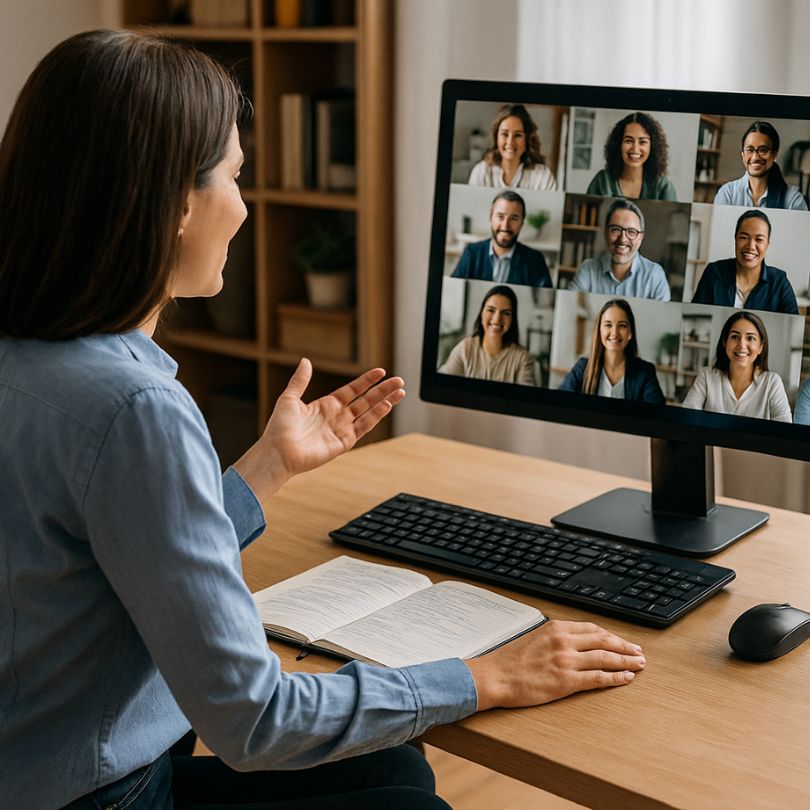
Creating Engaging Webinars: The Complete Guide to Plan, Promote, and Present

Engaging webinars don’t happen by accident—they’re crafted with intention, empathy, and a crystal‑clear promise that aligns your audience’s goals with your expertise.
To deliver truly engaging experiences, you’ll need to plan with interaction in mind from the start. That means thinking beyond lectures to design moments that prompt questions, encourage chat participation, and invite audience contributions. If you’re unsure where to begin, this practical guide shows you how to structure your session, set outcomes, and build in techniques like polls, breakout rooms, and live Q&A. For more ideas on how to make your webinar interactive, review approaches that spark participation and keep energy high from start to finish.
Start With Outcomes and Value
Every strong webinar starts with a transformation statement: in one sentence, define what participants will be able to do differently after your session. This guides your content choices, your interactive segments, and your call to action. A focused outcome minimizes tangents and helps you decide what to keep, cut, or postpone to a follow‑up resource.
Next, write a specific value proposition: who the webinar is for, what problem it solves, and why your approach is uniquely helpful. This clarity becomes the backbone of your landing page copy, your email subject lines, and your opening hook. When participants recognize themselves and their challenges in your messaging, they’re more likely to register, attend, and stay to the end.
Know Your Audience (Deeply)
Audience research is the cornerstone of engaging webinars. Interview past customers, survey your list, and analyze chat transcripts from prior events. Identify patterns: common questions, misunderstood concepts, or tricky implementation details. Your content should aim at these precise points of friction. The more specific your examples and language, the more your audience will feel seen—and the more engaged they’ll be.
Sensory variety matters, too. Consider audio, visuals, and pacing. Short demo clips, annotated slides, and thoughtfully chosen transitions can prevent cognitive overload. If your topic benefits from sound cues or you want to improve your production polish, explore tools and music programs that help you elevate audio quality, maintain attention, and create an immersive atmosphere without distracting from the core message.
Choose the Right Format
Format drives engagement. Consider what best serves your promise:
- Solo instructor: Ideal for how‑to trainings with live screen shares and demos.
- Interview or fireside chat: Great for thought leadership and case studies; the host can model curiosity and ask clarifying questions.
- Panel discussion: Useful for multi‑perspective topics; be sure to enforce time limits and equitable speaking share.
- Workshop: Highly interactive; participants complete activities live and get feedback.
Structure for Attention
Attention is earned in five‑minute blocks. Plan your webinar in short segments with clear transitions:
- Hook (0–2 min): Name the problem in your audience’s words; preview the transformation and what’s in it for them.
- Roadmap (1 min): Show the 3–5 steps you’ll cover and the interactive elements to expect.
- Core content (20–30 min): Deliver in modular chunks—teach, demonstrate, apply.
- Application (5–10 min): Give a worksheet, prompt, or mini‑exercise; let participants try it.
- Q&A (10–15 min): Answer prioritized questions you collected in registration plus on‑the‑fly chat.
- Next steps (2–3 min): Offer a clear call to action and resources for continued progress.
Design Slides That Teach (Not Just Tell)
Slides should offload memory, not overload it. Use one idea per slide, minimal text, and visual anchors (diagrams, arrows, highlights). When you demonstrate a workflow, zoom in and annotate; when you explain a concept, sketch it. Build curiosity with progressive disclosure—reveal bullets or elements in sequence so viewers aren’t reading ahead while you’re talking.
Engineer Interaction on Purpose
Replace passive viewing with active thinking. Seed the chat with a warm‑up question in the first two minutes. Schedule a poll at the 10‑minute mark; collect results and reflect them back (“I see 62% are struggling with automation—so we’ll spend extra time there”). Use short time‑boxed breakouts in workshops and have facilitators ready with a simple prompt. Keep social proof visible by sharing real‑time progress, quotes, or wins from participants.
Production Quality Without the Studio Budget
You don’t need a broadcast studio to deliver engaging webinars, but you do need clear audio, stable lighting, and clean framing. Use a dynamic microphone with a pop filter, position a key light 45° off‑axis, and keep your camera at eye level. Close background apps, hard‑wire your internet if possible, and test screenshares at full resolution to avoid blurry text.
Promotion That Fills the Room
Strong promotion starts with a compelling landing page. Make the headline promise explicit, add bullet‑point outcomes, feature speaker credibility, and answer objections (time commitment, skill level, recordings). Offer an enticing lead magnet—like a workbook or template—that pairs with the webinar and is delivered upon registration to increase conversions and show immediate value.
Use a multi‑channel promo plan: 3–4 emails to your list (announce, reminder, last‑chance), social clips highlighting takeaways, and partner cross‑promotions. Repurpose a 30‑second teaser video into short posts. Schedule calendar holds in confirmation emails and send two reminders (24 hours and 1 hour before). Your registration curve will spike in the last 48 hours, so time your strongest social proof for that window.
Deliver With Presence
Presence is a mix of pacing, clarity, and warmth. Speak slightly slower than normal conversation, pause after key points, and check chat for understanding. Use the participant’s name when you answer its question to build connection. Keep your energy up by presenting standing if possible, and have water within reach. If you’re sharing code or detailed UI, zoom to 125–150% and narrate where you click to reduce cognitive load.
Handle Q&A Like a Pro
Collect questions at registration and tag them by theme. During the webinar, route chat questions to a moderator who can consolidate duplicates and star the most relevant. Answer in clusters (“I’m seeing three questions about pricing—here’s the common thread”). Where possible, demonstrate live instead of describing abstractly. If a question requires a deep dive, park it for a follow‑up email with a resource bundle.
Follow Up to Drive Outcomes
Engagement doesn’t end when the webinar does. Send a recap within 24 hours that includes the recording, timestamps, the slide deck, and a quick‑start checklist. Segment attendees (live vs. registrants who didn’t attend) and tailor the call to action to each group. For high‑intent participants, offer an office hours session; for broader audiences, invite them to a short challenge or email mini‑course that helps them implement your framework.
Measure What Matters
Metrics tell the story of attention and impact. Track registration‑to‑attendance rate, average watch time, drop‑off points, chat velocity (messages per minute), poll participation, and CTA click‑through. Review the replay analytics to spot where viewers scrub or rewatch—those are prime candidates for future micro‑content or clarifications. Run a short post‑event survey to capture perceived value, satisfaction, and intent to take the next step.
Common Pitfalls to Avoid
- Overstuffed agendas: If everything is important, nothing is. Prioritize outcomes over coverage.
- Slide‑only delivery: Add demos, stories, and live applications to keep momentum.
- No clear CTA: Tell participants exactly what to do next and why it benefits them now.
- Skipping tech checks: Test audio, screen share permissions, and backup plans before you go live.
- Underutilizing interactivity: Plan polls, prompts, and Q&A in advance—don’t improvise them mid‑stream.
From Webinar to Evergreen Asset
Think of each webinar as a content atom factory. Slice the recording into chaptered clips, turn key lessons into short articles, and gather Q&A into an FAQ post. Build an email sequence that drips the best moments with takeaways and links back to the full replay. With thoughtful editing, your live session becomes an evergreen acquisition asset that continues to educate and convert long after the broadcast.
Conclusion
Creating engaging webinars is a repeatable craft: define outcomes, study your audience, pick the right format, engineer interactivity, and follow through with purposeful promotion and follow‑up. As you iterate, borrow what works from other channels—landing page testing, content repurposing, and even native ad creative intelligence—to reach more of the right people. With each event, your message will get sharper, your delivery smoother, and your results stronger.